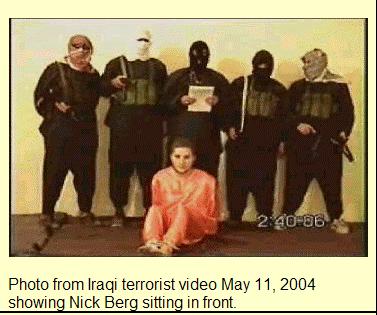Military supremacy is the hallmark of the American fighting machine. Tanks and soldier manpower dominated two previous world wars in the last century and threatened monopolization of countries boasting insubordination. From Germany to Vietnam, and from Grenada to Libya, daringly defiant countries encroaching on United States interests paid a steep price for their anti-American propaganda.
The empowered United States military force, with its heavy artillery and technically trained troopers, would storm onto enemy territory and discourage politically unfriendly countries. Enemies surrendered or withdrew their aggression knowing that conflict with the United States meant an apocalypse for their country. The only real enemy to outsmart the United States military kingdom was Vietnam, an agrarian country whose combat strategies were unorthodox.
The Vietnamese were unconventional soldiers using ambush warfare with countless precision. They devoured United States military positions and produced staggering causalities. President Johnson and his closest advisors, using counterintelligence maneuvers, truly believed they were ahead of the Vietnamese offense, ordering more soldiers abroad and advancing their position exponentially.
Playing by the Geneva Convention War-rule book, the retreating Vietnam forces, so they thought, would lose their momentum. Attrition of their soldiers through the brutal beating of American air and land assaults, would guarantee American victory.
But as American attacks began, sparking Vietnamese ingenuity, the enemy bypassed war-games and copiously retaliated with snipers and ambush squads using underground tunnels. Their usurpation of United States power came from a combat strategy they used for years that the United States was just learning about: Guerrilla warfare.
Invisible assaults
Unrelenting Guerrilla warfare, once a fierce Ninja-like invisible assault tactic, premised on two simple ideas. First was the element of captive surprise, of catching the enemy off guard through unsuspecting advances considered counter-intuitive by American military strategists. After all, who would think of randomly shooting from treetop posts or laying death-booby-trap grenades in civilian backpacks and huts? Second was a savagery of bludgeoning enemy forces with a primitive kill-instinct.

It was the same Neanderthal instinct that was capable of mutilating animals. Killing became a barbaric lust for bloodshed celebrated by the assassins as a victory. This included senseless soldier beheadings, torturous hostage starvations and extreme temperature exposure, and coercion of dehumanizing sexual acts. Trophies abounded for their sterling roust in the fields hunting prey.
Random brutal killings
Fast forward to the pandemonium of countless dead American and allied soldiers killed under a remarkably similar pathos of barbarism. Iraqi insurgents protesting the American presence in their country awaken a déjà vu memory of randomly brutal killings last seen in Vietnam.
Militants donned in explosives, teens sacrificed in suicidal bombs, cars detonated at American and Iraqi police stations; and how about the latest act of ravenous savagery? The mutilating of burned human corpses and displaying them as public effigies to stir national hatred. Or the slaughtering decapitation of Nick Berg, an anti-Semitic coup disguised as political retaliation for the Abu Ghairb prison abuses.
Human taxidermy
Such symbols of unconventional brutality are nothing new. Like the Vietnamese army, who were inveterate hunters since Biblical time, Iraqis basked in the glory of capturing and torturing their own hunted animals. Killing the chased animal-the helpless human victims—was not enough. No, their morbid obsession to showcase their prey resembled a form of human taxidermy.
The war games of Iraqi resistance resurrects the same subhuman fascination for genocide witnessed repeatedly in the archives of American military history. Whether shocked by the massacre of Jews under Hitler’s tyranny, angered by countless body bags of air-lifted soldiers in Vietnam, or repulsed by vivid televised images of carnage surrounded by cheering Iraqis, the inescapable truth is that not all human beings are civilized or subscribe to the same moral codes of humanity. That means that war with savages does not play by conventional war rules. Rules for animal warriors surviving on primitive instincts call for drastic measures that destroy the feeding frenzy for bloodshed.
Following the Israeli army’s example against enemy Palestinians, and in the words of the police officer O’Mally played by Sean Connery in the movie Untouchables, “When they shoot one of yours, you shoot two of theirs.” You hunt against those who hunt you. An eye for an eye; a tooth for a tooth.

Israeli’s superior military force can outsmart their border antagonists because they retaliate swiftly, aggressively, and show no compassion or political diplomacy for perpetrators. Bombing the hide-outs of Hamas leaders sent a viciously clear message to its enemies—we play by your rules, and we do it better. Unlike the American military, once an invincible superpower and now the laughing stalk of the international community, the Israeli army proves its invulnerability by flexing its muscle against Palestinian mind-set of savagery, futility of human life, and their celebrated feast of vengeance.
Learn from Israel’s experience
Wake up President Bush and realize your top-seated Generals and military advisors are obsolete. They strategize in a tightly sealed vacuum suffocating on anti-Deluvian ideas of Judeo-Christian principles. They espouse bringing terrorists to justice as if rounding up petty thugs living in America. They do not grasp the Iraqi insurgents operate under Guerrilla-war mentality. Terrorists cannot be brought to justice; they can only be killed.
Middle East Scholars, historians, Israeli leaders, and Iraqi-American consultants are America’s real secret weapons. Let them portray the Vietnam-surrealism of today’s conflict and how prosecution of savagery begins and ends with one method: Retribution and obliteration.
Update: This article was originally uploaded May 16, 2004. The man who beheaded Nick Berg was later identified as Al-Zarqawi, who was killed in 2006 by the Americans. The gruesome stillframe of the beheading process was made by me from the video. I found the three minute video of the beheading process of Nick Berg to be deeply disturbing. Either the Taliban used a dull knife blade, or their intent was to prolong the victim’s suffering, but watching the continuous sawing at his neck bones must have caused him unbelievable suffering.
The terrorists, performing for the camera, deliberately did not sever Nick Berg’s windpipe, so for three minutes while Al-Zarqawi was sawing the sides and back of Nick’s neck, the viewer can hear Nick screaming through his bloody windpipe. Only at the very end of the three minute videotape when it is apparent they have finally sawed through his spinal cord in the back of his neck, does Al-Zarqawi rip the knife through Nick Berg’s vocal cords, silencing the screams, and then jerks the head up off the shoulders.
My reason for telling you this is because you don’t want to see this video and yet, you need to be aware of how mentally disturbed the Taliban supporters really are.
Skeptically yours,
Mim